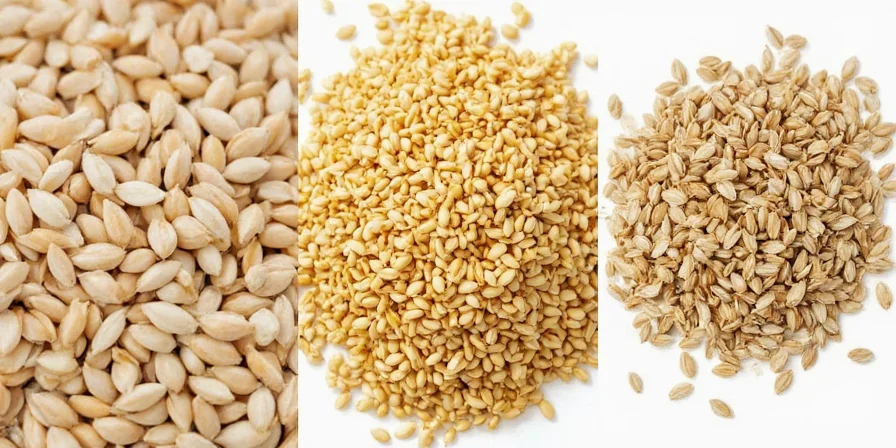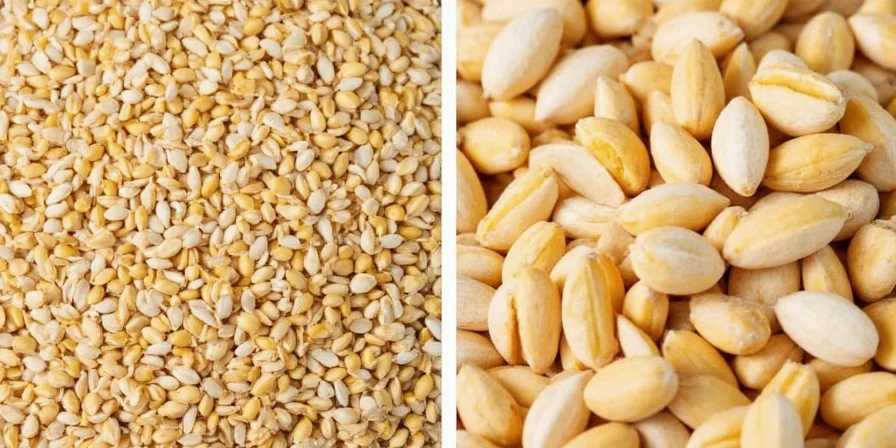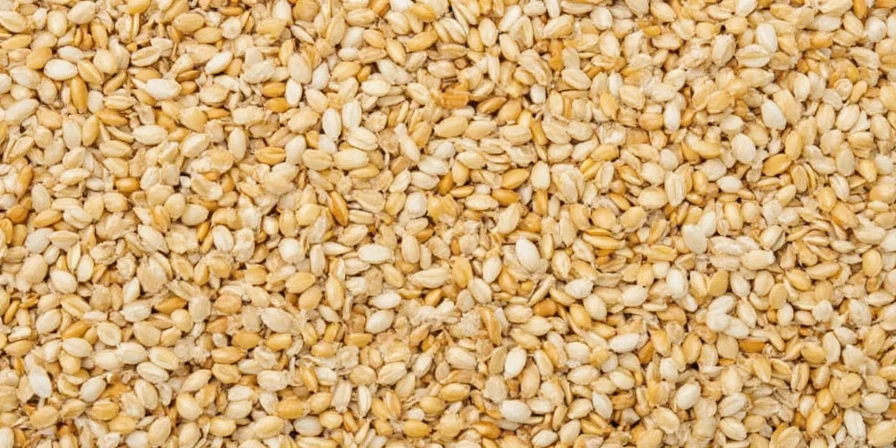Sesame seeds are edible seeds from the Sesamum indicum plant, packed with healthy fats, protein, and minerals like calcium and magnesium. This comprehensive guide explains exactly how to select, store, and use both white and black sesame seeds in everyday cooking—with practical techniques backed by food science.
| Type | Color | Flavor Profile | Best For | Visual |
|---|---|---|---|---|
| White Sesame Seeds | Pale ivory | Mild, nutty | Baking, breads, light sauces |  |
| Black Sesame Seeds | Raven black | Stronger, slightly bitter, earthy | Desserts, rice dishes, garnish |  |
| Golden Sesame Seeds | Light brown/yellow | Bold, toasty, aromatic | Roasting, stir-fries, sauces |  |
White sesame seeds (hulled) offer a mild flavor perfect for baking and light sauces, while black sesame seeds (unhulled) provide intense earthiness ideal for Asian desserts and rice dishes. Golden sesame seeds strike a balance—roast them for maximum flavor in stir-fries.
Health Benefits and Nutritional Facts
Per 1-ounce (28g) serving, sesame seeds contain 160 calories, 14g fat (mostly healthy unsaturated), 5g protein, and significant calcium (14% DV), iron (20% DV), and magnesium (25% DV). Their lignans (sesamin and sesamolin) demonstrate antioxidant properties in clinical studies. Black sesame seeds contain marginally higher antioxidants than white varieties, though both offer similar nutritional profiles.

7 Practical Cooking Applications
- Toast properly: Heat in dry skillet 2-4 minutes over medium heat, stirring constantly until golden. Transfer immediately to cool plate to prevent burning.
- Boost sauces: Add 1 tsp toasted seeds to salad dressings or tahini-based sauces for texture.
- Seeded crusts: Press seeds onto fish fillets or chicken breasts before pan-searing.
- Ice cream topping: Black sesame creates dramatic contrast on vanilla ice cream.
- Rice enhancement: Mix 1 tsp toasted seeds per cup of cooked rice.
- Bread integration: Add 2 tbsp seeds to bread dough during kneading.
- Simple gomasio: Blend 4 parts toasted white sesame with 1 part sea salt.
Optimal Storage Methods to Prevent Rancidity
Sesame seeds contain 50% oil, making them prone to oxidation. Follow these evidence-based storage protocols:
- Whole seeds: Store in airtight container in cool, dark pantry for 3-6 months
- Extended freshness: Refrigerate for up to 1 year or freeze up to 2 years
- Ground products (tahini): Always refrigerate after opening
- Critical factors: Avoid light exposure and moisture contact to prevent rancidity

Scientific Basis for Toasting Sesame Seeds
Roasting triggers the Maillard reaction at 300°F (150°C), creating new flavor compounds through amino acid-sugar interactions. This process:
- Releases natural oils that coat seeds, intensifying flavor perception
- Reduces moisture content from 5% to 1%, creating optimal crunch (verified by texture analysis)
- Increases volatile compounds like 2-acetyl-1-pyrroline by 300%, enhancing nutty aroma

Economic and Sustainability Considerations
Over 60% of global sesame comes from Sudan and Myanmar, where drought-resistant cultivation supports smallholder farmers. Choosing fair-trade varieties directly impacts sustainability—sesame requires 30% less water than comparable oilseeds while maintaining soil health through crop rotation.
Frequently Asked Questions About Sesame Seeds
How long do sesame seeds stay fresh?
Whole seeds remain fresh 3-6 months in a pantry, up to 1 year refrigerated, or 2 years frozen. Signs of rancidity include bitter taste and sour odor.
What's the difference between white and black sesame seeds?
White sesame seeds are hulled with milder flavor, ideal for baking. Black sesame seeds retain their hulls, offering stronger earthy taste with marginally higher antioxidants—perfect for Asian desserts and rice dishes.
Why must sesame seeds be toasted before use?
Toasting triggers Maillard reaction at 300°F, creating 300% more flavor compounds. Untoasted seeds taste grassy and lack the characteristic nutty aroma that defines sesame flavor in cooking.











 浙公网安备
33010002000092号
浙公网安备
33010002000092号 浙B2-20120091-4
浙B2-20120091-4